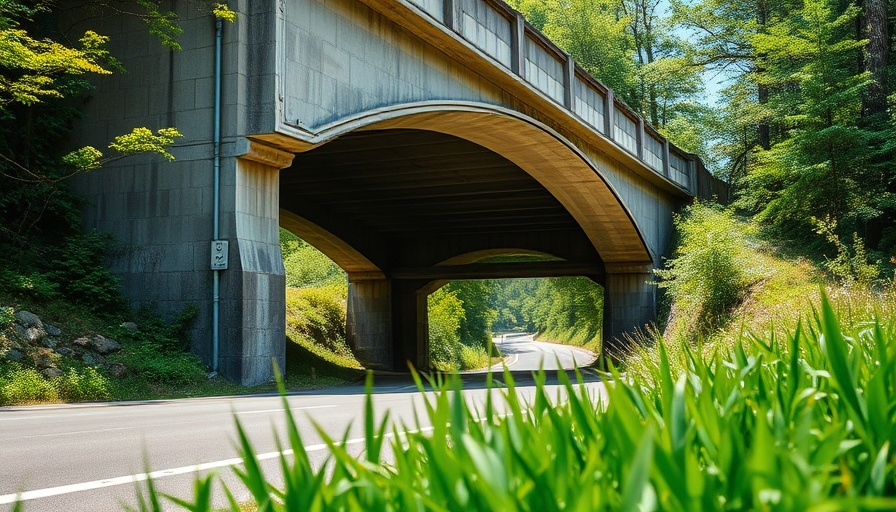
Revolutionary Underpasses: A Lifeline for Amphibians
Amphibians such as frogs and salamanders face dire challenges due to habitat loss, climate change, and perilous roads that threaten their survival. A groundbreaking study conducted by researchers at the University of Vermont reveals that wildlife underpasses may be vital in preventing these animals from facing mortality on roadways. Installed under a road in Monkton, Vermont, these underpasses demonstrated a remarkable ability to reduce amphibian road deaths by over 80%.
The Study That Changed the Game
Between 2011 and 2015, a dedicated team collaborated with the Vermont Agency of Natural Resources to monitor amphibian mortality rates before and after the installation of the underpasses. Their findings are astonishing: the two tunnels enabled a staggering 80.2% reduction in amphibian deaths in the monitored areas. Matthew Marcelino, the lead author of the study and an ecologist at UVM, expressed his surprise, noting that removing climbing amphibians from the data—spring peepers specifically—resulted in a dramatic 94% decline in road fatalities.
The Importance of Design
This pioneering research is the first of its kind to provide long-term evidence of the effectiveness of amphibian-specific wildlife underpasses in the northeastern United States. It details how specific design elements—such as wall height, angles, materials, and tunnel layout—significantly impact the underpasses' success in facilitating safe amphibian crossing. This level of planning and thoughtfulness illustrates a growing awareness of the role human infrastructure plays in wildlife conservation.
Why Amphibians Matter
Amphibians are more than just cute creatures; they are crucial players in their ecosystems. They control insect populations and contribute to nutrient cycling within their habitats. By protecting them with initiatives like wildlife underpasses, we also ensure the health and balance of the broader ecosystem. The fight against climate change depends significantly on maintaining biodiversity, with amphibians at the forefront as indicators of environmental health.
Community Involvement for Lasting Change
The success of these underpasses wouldn't be possible without the commitment of the local community and scientists who invested time and resources. Citizen scientists played a significant role in collecting data, proving that grassroots efforts alongside scientific research can lead to impactful change. This model presents a roadmap for other communities facing similar challenges, showing how collaboration can yield significant ecological benefits.
A Path Ahead: Future Implementations
The implications of this study extend beyond Vermont. As traffic-related mortality for amphibians continues to rise globally, deploying wildlife crossings tailored for these vulnerable species can become a practical solution in both rural and urban settings. Efforts to lobby for more ecological considerations in local infrastructure projects can foster an environment where wildlife conservation is integrated into everyday life.
With the knowledge gained from this study, policymakers and environmental advocates can take actionable steps toward creating safer passages for wildlife. Each underpass constructed is a testament to humanity's capacity to coexist with nature and protect the essential threads that weave our ecosystems together.
Embrace Eco-Friendly Innovations
The remarkable success of wildlife underpasses emphasizes the importance of innovative solutions in safeguarding our planet’s delicate balance. If you live in an area where roads disrupt wildlife migration, consider advocating for similar initiatives. Join community efforts that focus on environmental conservation, ensuring that while we advance, we do not leave our ecosystem behind.
 Add Row
Add Row  Add
Add 



 Add Row
Add Row  Add
Add 

Write A Comment